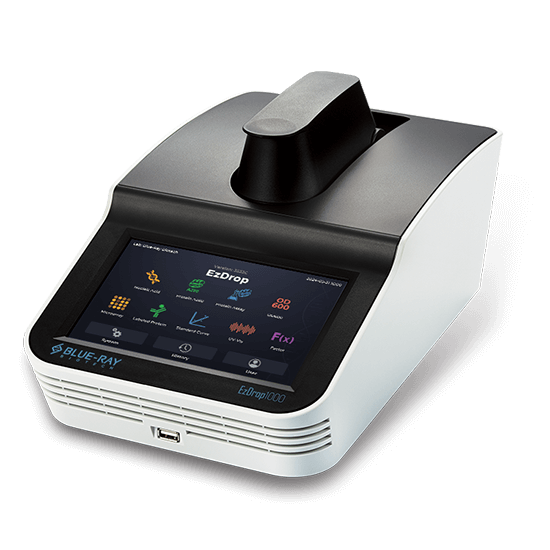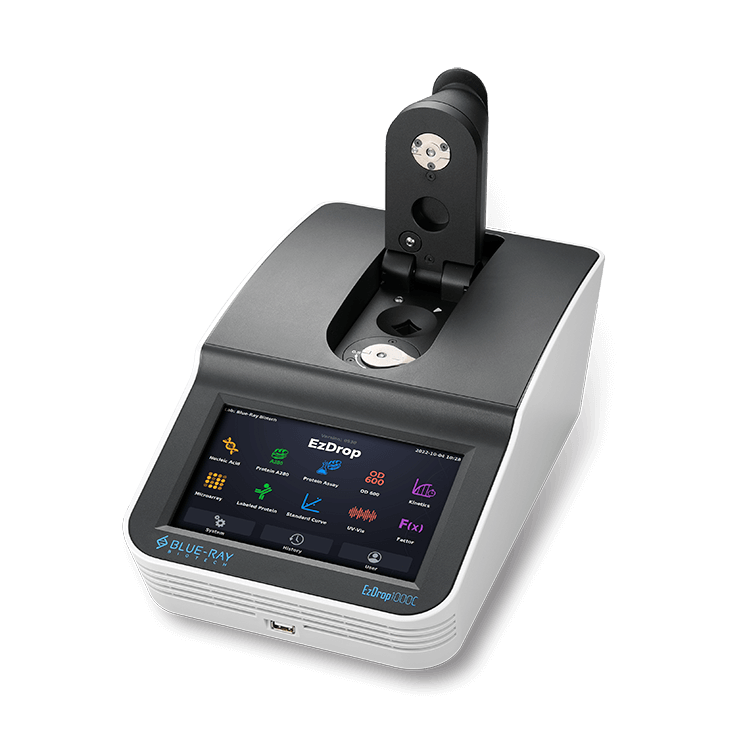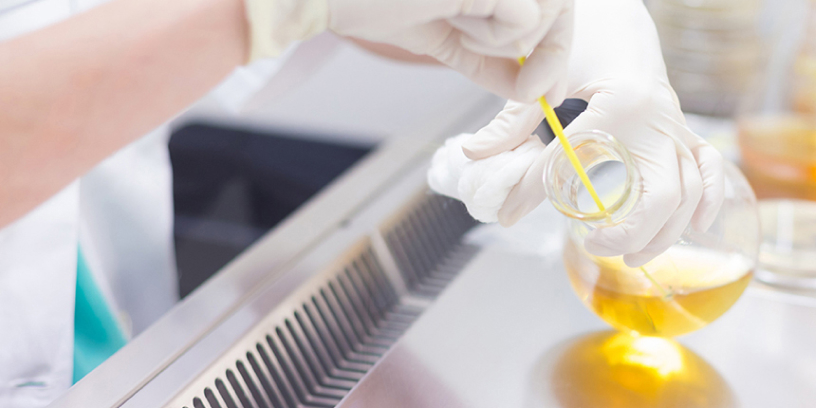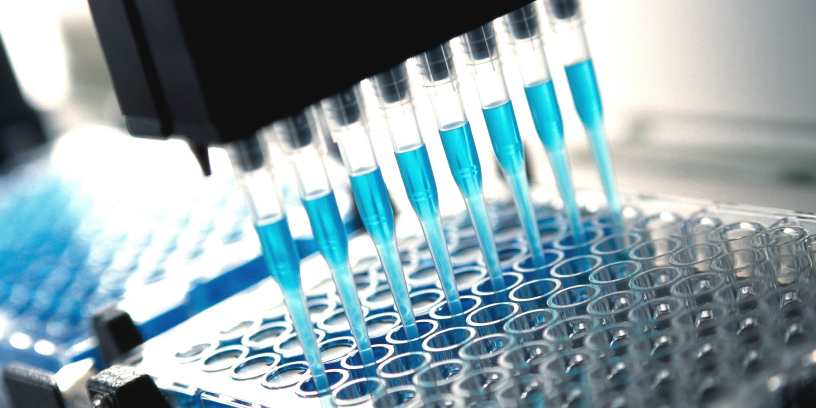Comprehensive Nucleic Acid Quality Control-Total Solutions for Molecular Experiment Issues
2024-01-16
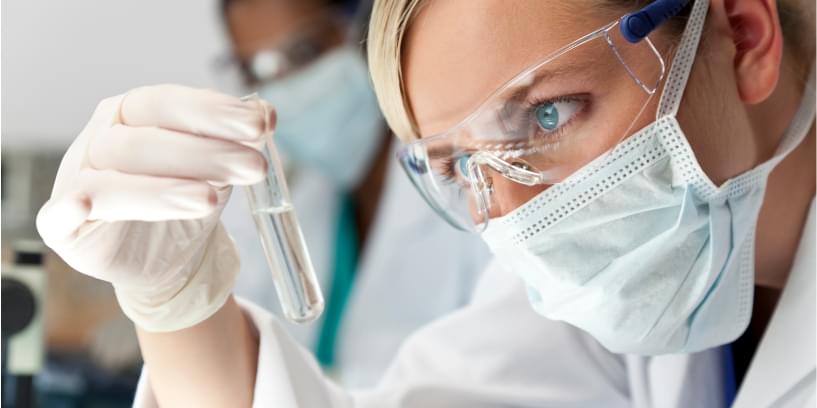
The nucleic acid quality plays an important role in the success of molecular experiments. Through the integration of micro-volume spectrophotometer and capillary electrophoresis system, the quality control of nucleic acid sample’s concentration, purity and integrity can be achieved meticulously without further experimental issues in the future.
Table of contents
- Nucleic acid quality control is the foundation of molecular experiments!
- How to perform quality control for nucleic acid concentration and purity?
- DNA/RNA concentration quality control
- DNA Purity Quality Control
- RNA Purity Quality Control
- How to perform quality control for fragment integrity?
- DNA Fragment Integrity Quality Control
- RNA Fragment Integrity Quality Control
Table of contents
- Nucleic acid quality control is the foundation of molecular experiments!
- How to perform quality control for nucleic acid concentration and purity?
- DNA/RNA concentration quality control
- DNA Purity Quality Control
- RNA Purity Quality Control
- How to perform quality control for fragment integrity?
- DNA Fragment Integrity Quality Control
- RNA Fragment Integrity Quality Control
Nucleic acid quality control is the foundation of molecular experiments!
To the scientific researchers in the molecular laboratories, the nucleic acid quality directly influences the success of downstream experiments. Without a doubt, nucleic acids with high concentration, purity and whole fragment are the ideal nucleic acid samples to laboratory fellows. The target nucleic acids from tissues, cells and microorganisms are purified and enriched. Prior to handling the nucleic acid sample further, the quality control of nucleic acid concentration, purity and fragment integrity shall be performed. Specifically speaking, the concentration measurement is to meet the sample requirement in the downstream experiments. The purity measurement is to confirm whether the sample is contaminated by other nucleic acids, proteins or chemical substances. The fragment integrity is the key factor to evaluate whether or not the sample has degraded.
How to perform quality control for nucleic acid concentration and purity?
The nucleic acid concentration and purity determinations require the absorbance values such as A230, A260, and A280, with A260 for concentration, A260/A280 and A260/A230 for purity.
For the conventional absorbance measurement, a spectrophotometer, a cuvette added with at least 100 μl of the sample and 30 minutes of instrument warm-up before the measurement are required. For each sample measurement, the cuvette needs to be cleaned prior to the next measurement. Besides the complicated operations, there is also an excessive waste of samples. Most laboratories now use the micro-volume spectrophotometer, requiring only 1 μl of sample for the concentration and purity measurements. Further, the next measurement can be made simply after cleaning the sample holder base, with more convenient and faster use. Using EzDrop 1000 micro-volume UV/VIS spectrophotometer as an example, the quality control of nucleic acid (DNA, RNA) concentration and purity can be afforded, requiring 3 seconds only to complete the sample concentration and purity measurements rapidly. In addition, the dynamic measurable wavelength of EzDrop 1000 ranges from 190 up to 1000 nm. Meanwhile, the sample holder base is coated with a nano hydrophobic layer to ensure highly accurate and precise results. Moreover, EzDrop 1000 comes with an intuitive operating touch screen, making the operations fast and simple and helping the researcher to complete the sample quality control effortlessly.
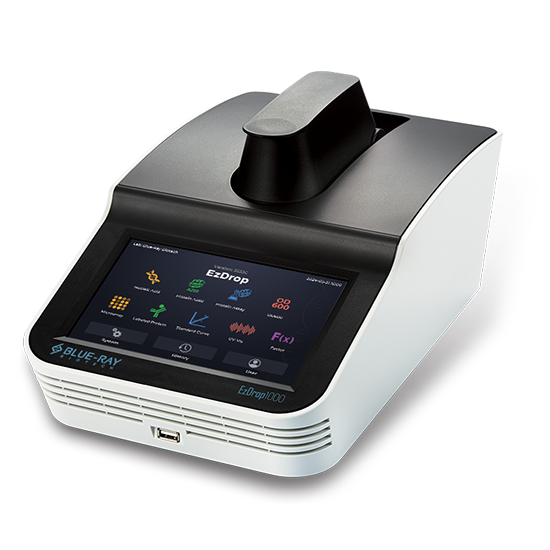
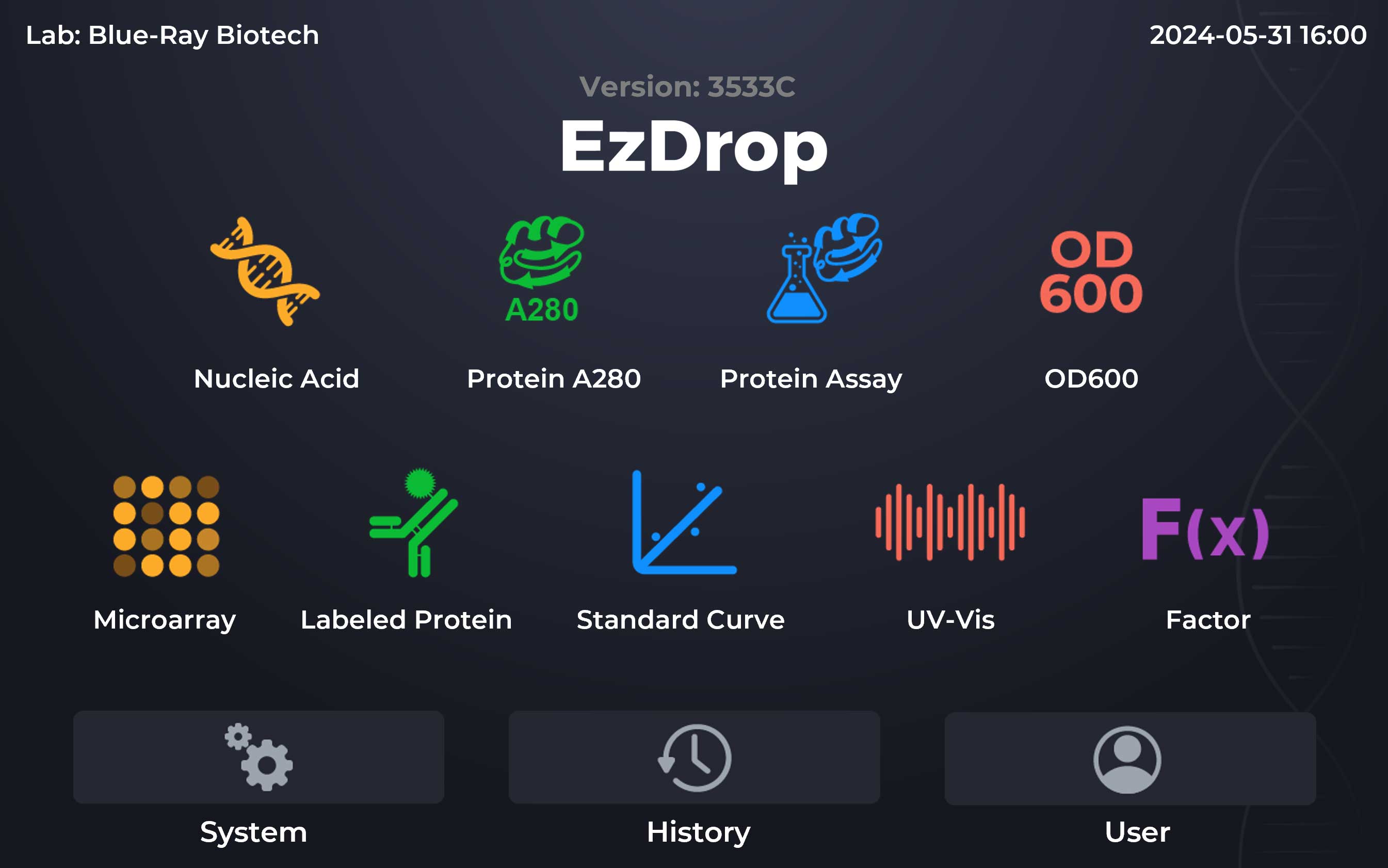
EzDrop 1000 Main Measurement Interface
DNA/RNA concentration quality control
For the concentration measurements of DNA and RNA samples, simply select the “Nucleic Acid” button on the main interface of EzDrop 1000. After the data is cleared, add 1 to 2 μl of the sample on the sample carrier and the instrument will display the sample concentration after 3 seconds. The auxiliary LED lamp on the side of the sample carrier can avoid the sample dropping errors. The Nano hydrophobic coating layer design not only enhances the sample liquid column stability, but also reduces the residual sample proportion. These considerate designs further ensure the accuracy and precision of results.

EzDrop 1000 LED Assist Light Design & Sample Window System with Nano Hydrophobic Coating
DNA Purity Quality Control
For the DNA purity quality control, the standard method adopts micro-volume spectrometry (light absorbance) to determine the DNA purity by using the ratios of A260/230 and A260/280. When the A260/A280 ratio of DNA reaches 1.8-2.0, it is usually regarded to have achieved the desired purity. If the sample contains any protein or phenol impurity, the A260/A280 ratio will be altered. For example, if the A260/A280 ratio falls below 1.6, it indicates that the sample contains protein or phenol contaminants. When the A260/A280 ratio becomes greater than 2, it indicates that RNA is not removed totally or DNA has denatured.
RNA Purity Quality Control
Likewise, the standard method for RNA purity quality control adopts micro-volume spectrometry (light absorbance) using the ratios of A260/230 and A260/280 to determine the RNA purity. Generally, the A260/280 ratio falls between 1.8~2.0. If the A260/280 ratio becomes greater than 2.0, it indicates that RNA has degraded. If the A260/280 becomes less than 1.8, it indicates the sample contains protein or other impurities. When the A260/230 ratio falls below 2, it indicates RNA contains phenol or salt impurities.
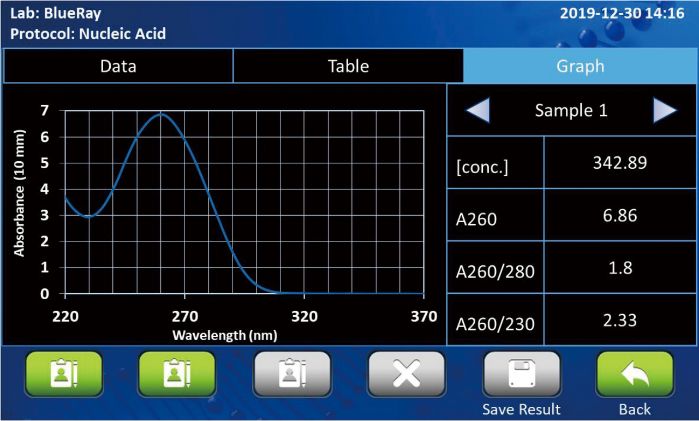
EzDrop 1000 DNA Sample Measurement Interface
How to perform quality control for fragment integrity?
The nucleic acid sample not only requires the concentration measurement (total quality), but also the fragment integrity is a key factor to evaluate the sample quality. As a result, the quality control of sample integrity shall also be performed. Capillary electrophoresis is the option second to none for the quality control of nucleic acid sample integrity.
DNA Fragment Integrity Quality Control
Using Qsep capillary electrophoresis as an example, the software comes with the genetic DNA quality number (DQN) system able to assess the gDNA quality highly efficiently. The data analysis software will base on the sample degradation extent and the proportion of samples exceeding the set threshold to give the DQN value between 0 and 10. A higher DQN value indicates better sample integrity, i.e., higher sample quality.

Comparison of DQN values of gDNA samples of different qualities
RNA Fragment Integrity Quality Control
As ribonucleases are widely present, RNA samples are highly likely to undergo degradation, and RNA degradation will directly result in the failure of downstream experiments. Therefore, the RNA sample integrity quality control is critically important.
For total RNA samples with a lower degradation extent (such as RNAs extracted from blood and fresh tissues), Qsep software with the RNA quality number (RQN) system will give the RQN value between 0 and 10 based on the integrity and peak area ratio of 18s and 28s. A higher RQN value indicates better sample integrity, i.e., a higher sample quality.
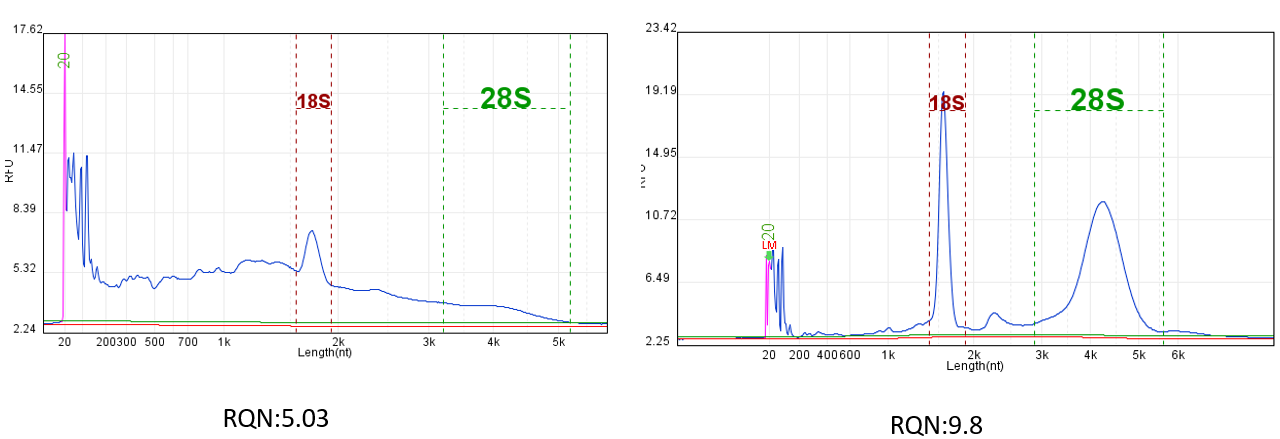
Comparison of RQN values of total RNA samples of different qualities
For total RNA samples with a higher degradation extent (such as RNAs extracted from FFPE), 18s and 28s usually will fully degrade. Therefore, it is not appropriate to use RQN value to evaluate the quality of this class of samples. For this class of samples, Qsep software comes with another RNA quality assessment value DV200, i.e., the proportion of samples of greater than 200nt. A higher DV200 value indicates lower sample degradation extent, i.e., higher sample quality.
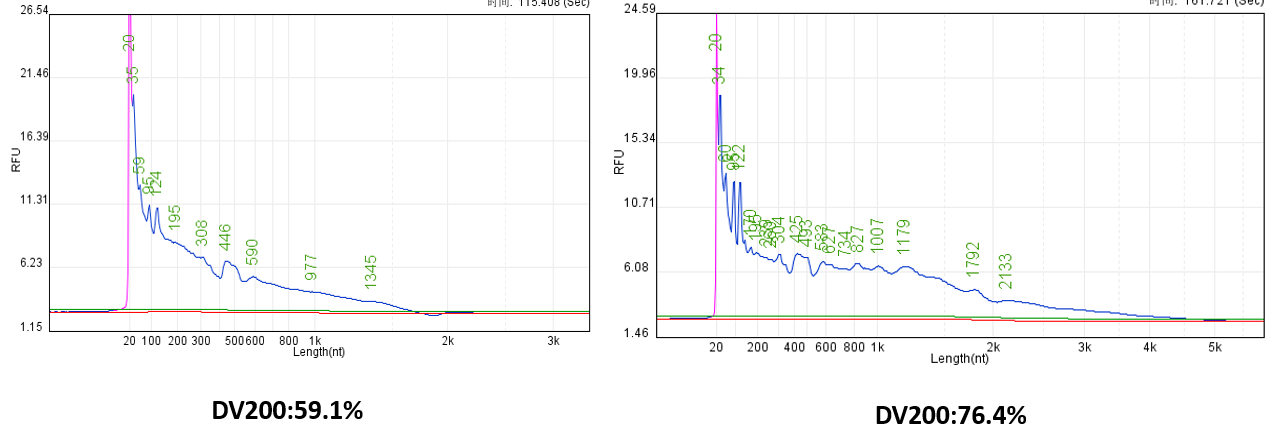
Comparison of DV200 values of total RNA samples of different qualities
In summary of the aforementioned, through the integration of micro-volume spectrophotometer and capillary electrophoresis system, the quality control of nucleic acid sample’s concentration, purity, and integrity can be achieved meticulously without further molecular experimental issues in the future.

